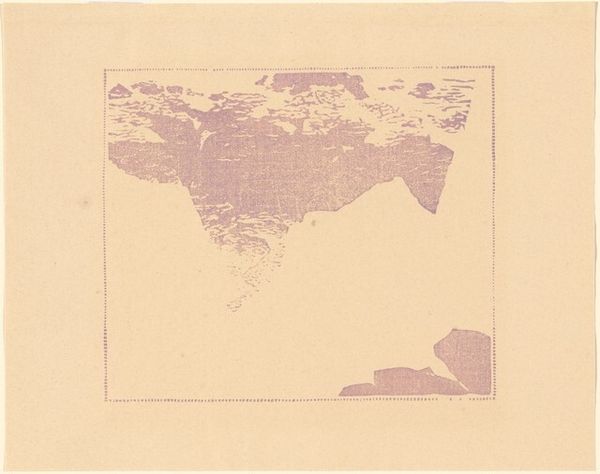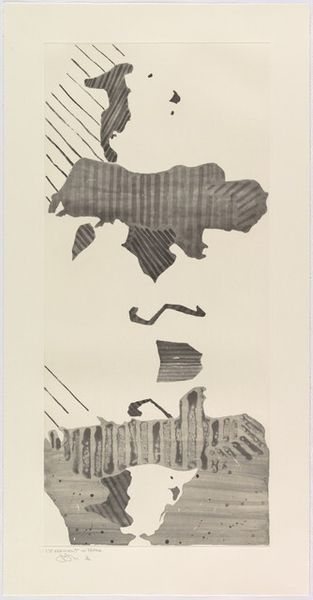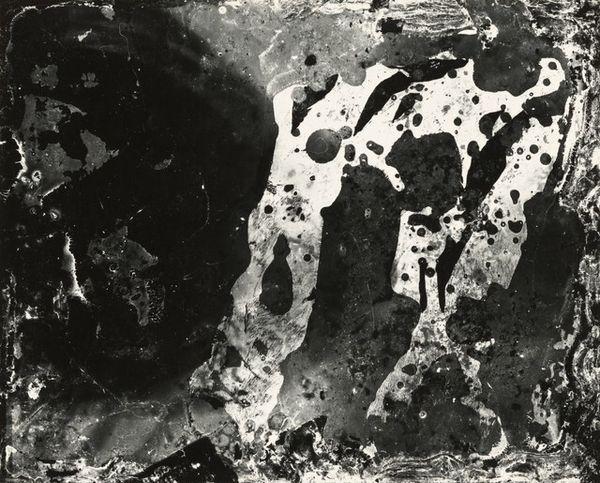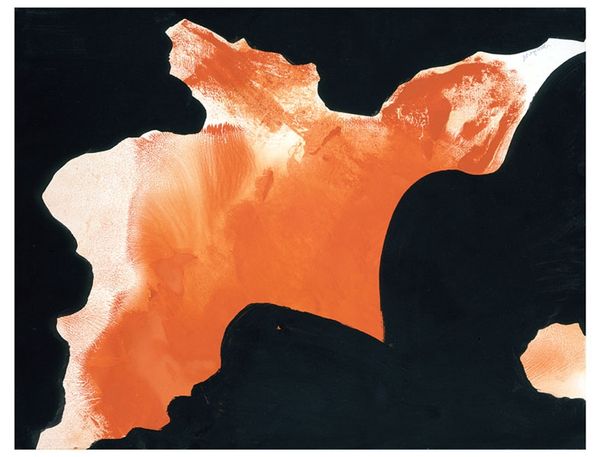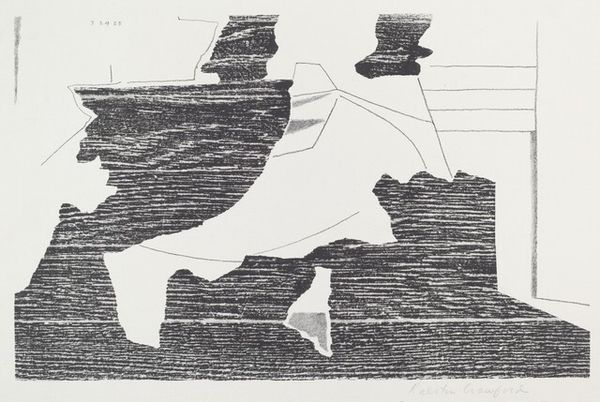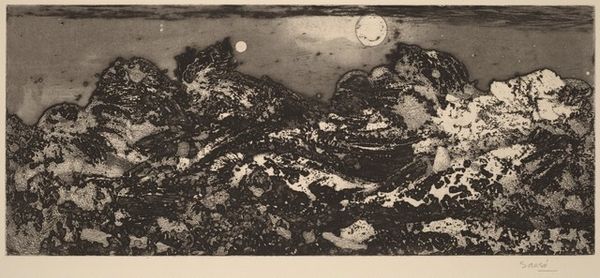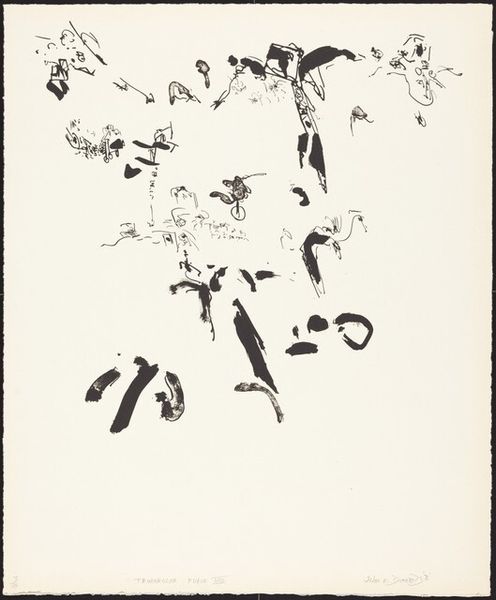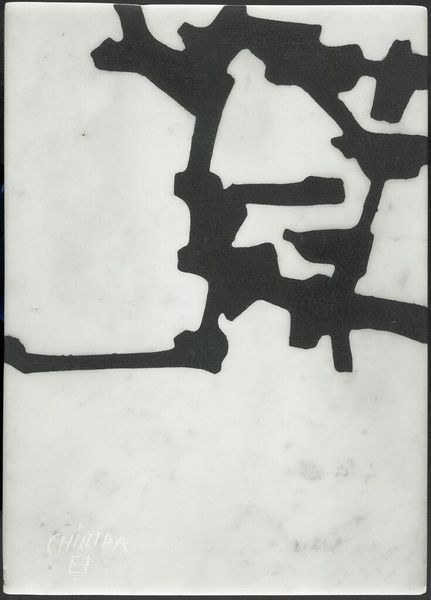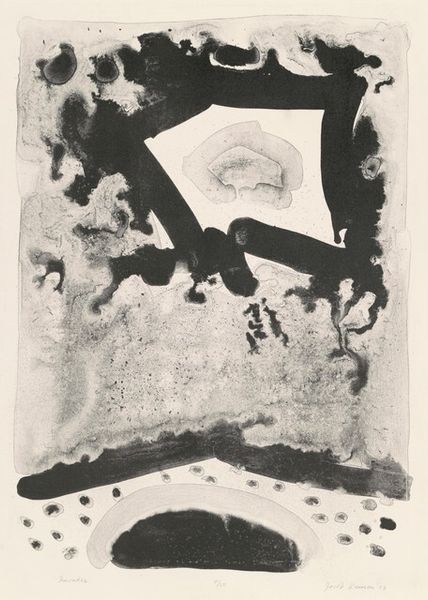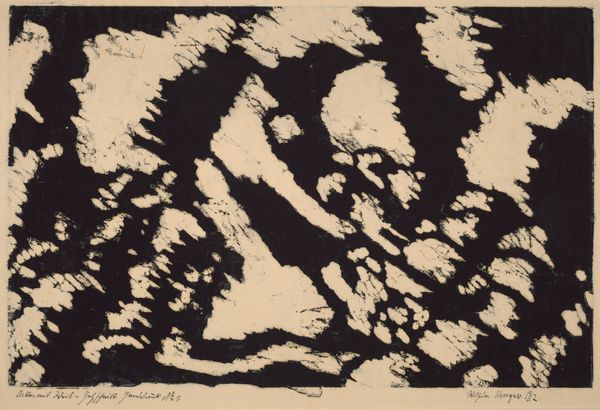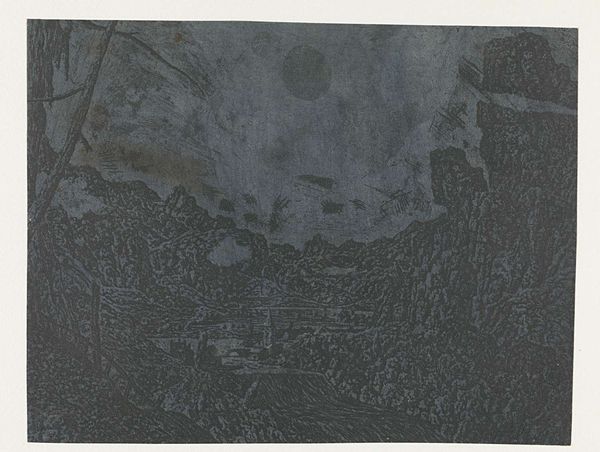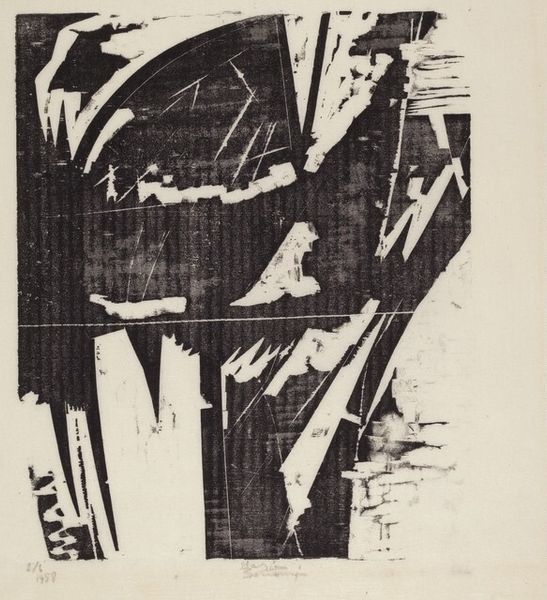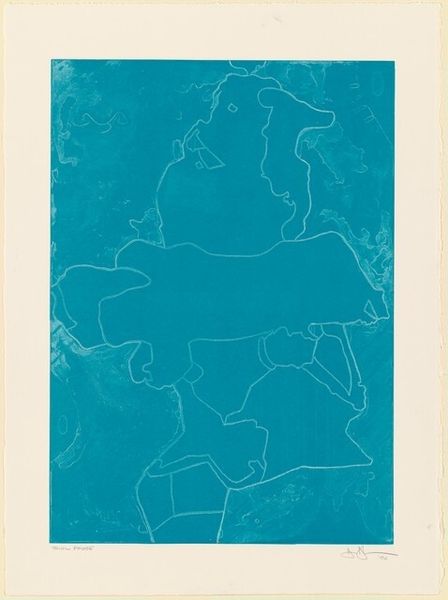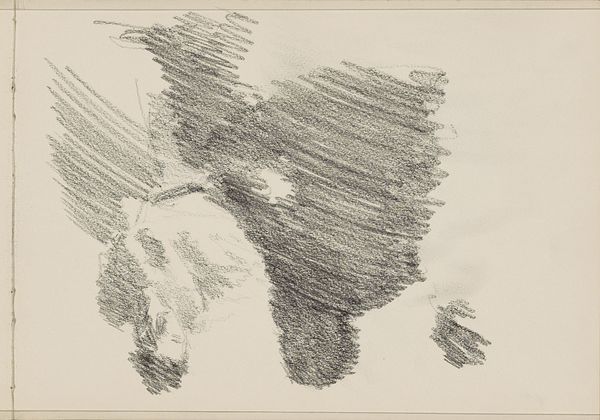
drawing, print, woodcut, graphite
#
drawing
# print
#
form
#
woodcut
#
geometric-abstraction
#
abstract-art
#
graphite
#
abstract art
#
monochrome
Dimensions: overall: 15.2 x 15.2 cm (6 x 6 in.)
Copyright: National Gallery of Art: CC0 1.0
Curator: Right now, we’re looking at a compelling, untitled work by Heide Fasnacht, completed in 1995. It’s a fascinating blend of woodcut, graphite, and printmaking techniques on paper. Editor: My initial thought is that it feels like an exploded diagram—dark masses interrupted by sudden, almost violent, voids. There's a nervous energy, a kind of restrained chaos trying to break free. What's the background to Fasnacht’s interest in these forms? Curator: Fasnacht often explores form and deconstruction. This piece, particularly in its monochrome palette, echoes broader artistic movements concerned with pure abstraction. Its stark contrasts challenge our perception—figure and ground become unstable, constantly shifting. Consider the socio-political atmosphere of the mid-90s. Did you see an analogy of fragmentation and rupture reflected in the broader cultural landscape? Editor: Oh, absolutely! It could easily represent anything from a fracturing relationship to political upheaval. Abstraction often gives us that room to project. The roughness of the woodcut—you can practically feel the artist digging into the block—adds a crucial layer. It keeps it visceral, not coldly intellectual. This texture makes a difference, right? Curator: Undoubtedly. That physicality disrupts any easy interpretation, grounding it in the labor and materiality of its production. Think about the gallery spaces, alternative or academic where this might be displayed. And how that impacts access to it, right? But where do you see it fitting into a broader art history? Editor: In some ways, it looks like the afterimage of an explosion; almost like an Oppenheim type of surrealist object. This explosion, though, feels more internal. More cerebral. Anyway, it leaves me pondering about the raw nature of these types of forces in shaping art in these eras. Curator: Fasnacht asks that we embrace ambiguity, to find moments of resonance within what initially appears disordered. It pushes the observer towards questioning assumptions. Editor: Well, for me, it's that sense of things being about to fall apart—the exquisite tension of potential energy waiting to be released—that's so captivating here. That sense is what I'll take away today.
Comments
No comments
Be the first to comment and join the conversation on the ultimate creative platform.
